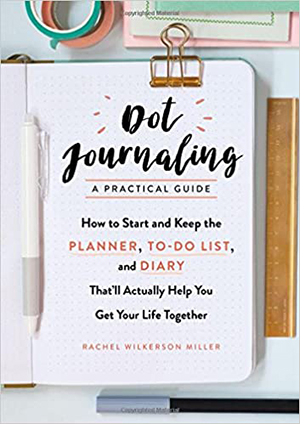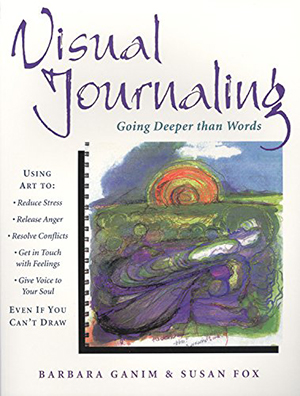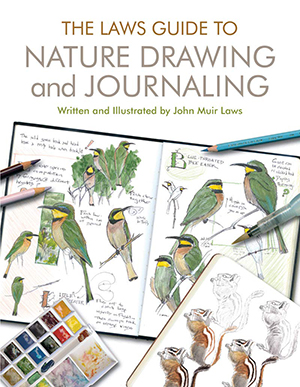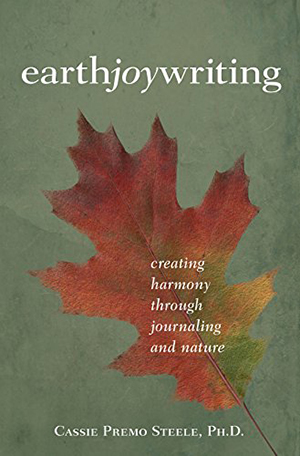The many ways and whys of journaling
Posted on February 11, 2021 at 6:00 am

BY CAITLIN WHEELER
When choosing to journal, you may find that there is one looming question that’s liable to trip you up before you’ve even begun: Why am I journaling?
Not knowing why you’re journaling may confuse your writing. Your answer to “why” will likely affect your content, your frequency, your audience, and perhaps most of all, your motivation.
There are many reasons to journal, probably as many as there are people who journal. In case you are still searching for your “why,” here are a couple of main reasons you might pick up a journal and set pen to paper.
TO KEEP A RECORD
Some of the best record-keeping journal advice I ever received came from Neil Katcher, a host on the podcast “Mortified,” which features diarists sharing their most embarrassing entries from their teenage diaries.
He had this to say about good journal writing:
“Make sure you do two things. Write about the actual event… describe the event or concrete thing that happened, then also analyze it; write about the emotional impact of it. But don’t just do one of those things… Write down your experiences, but make sure to include your perspective, and yourself almost as a character in it…. Our memories don’t always place us as a character in those memories, but a journal does.”
For more on journal-writing from Neil and his cohost Dave Nadelberg, listen to their guest episode “Spill Your Guts” on “The Allusionist” as a quick 20-minute dive into how people write in their diaries and why.
If you want to really polish up your memories for sharing with the public, the class “Write Your Life Story” from Gale Courses might be a good starting point.
When you feel ready to sort through your memories and tell them in story form, take a look at A Year of Writing Dangerously, a book in which writing instructor Barbara Abercrombie shares tips, prompts, and anecdotes on memoir writing. Or, you can look at some of my previous articles on how and why to write memoir.
If you’re not at the sharing-your-story stage yet (or ever), keeping a journal can help you remember everything you want to say. Keep reading for some different ways of thinking about how to preserve those memories.
TO STAY ORGANIZED OR FORM HABITS
This! If I don’t have a specific place to keep my thoughts, wish lists, story ideas, ongoing household projects, and upcoming Zoom dates, things quickly fall apart.
Datebooks often have too much space dedicated to things I don’t need, and not enough to things I do. They don’t seem to fit my individual needs.
If regular datebooks don’t work for you, you might like bullet journals.
Bullet journaling allows you full control over the structure of your journal: how many pages to dedicate to calendars, resolutions, upcoming projects, habit-building, diary entries, budgets. The sky is the limit on what to include and how to format it because you are doing all the designing yourself.
I admit, the endless possibilities sound a little overwhelming to me. If you feel the same, I recommend the book Dot Journaling – a Practical Guide. This was the first book on bullet journaling that I read and thought “I can actually do this!” Rachel Wilkerson Miller breaks down the different kinds of spreads you can create in a bullet journal in the easiest, simplest explanations I have found so far. I found her book easy to bounce through based on my needs. She encourages you to start small and add more along the way as you learn what works for you.
If you’re confident in your ability not to bite off more than you can chew, and you want to start some more creative endeavors to make your bullet journal attractive, try out The 365 Bullet Guide. Like Wilkerson, Zennor Compton lays out her page spreads in simple, easy-to-navigate style, but she places more focus on the many ways you can “spice up” your journal. Look at page 132 for how to track your moods using a mandala or page 234 for a suggested spread you could use to track which potatoes make for the fluffiest mash.
Beyond Bullets is a title that’s more focused on the creative possibilities of a bullet journal. It would make a great companion to either of these first two books. Megan Rutell shares doodles, fonts, grids, borders, and banners that you can use to style your own journal.
TO PROCESS THOUGHTS
I once had a teacher tell me that he never knew what he thought until he wrote it down. He was speaking of academic papers, but I have found this to be true for my feelings and emotions, too. Writing gives me the chance to set down my jumbled emotions and sort them like puzzle pieces.
Not all self-help books are created equal, and some are written more to capitalize on a zeitgeist rather than share expertise. As a general rule, I usually shy away from any books or articles with a message along the lines of “this one weird trick will solve all your problems”.
“One or more of these several thoughtful processes could offer you some tools to see your problems in a new light” is a much better message, if less catchy. And there are certainly some resources on therapeutic and meditative journaling that try this more open approach.
The class “Introduction to Journaling” from Gale Courses offers a good start on using journals for self-discovery and emotional well-being. While it opens with a more “what is journaling?” approach, the course moves on to talk through many topics related to journaling toward better mental health. There is even a lesson called “Journaling Through Chaos, Crisis, and Change” that feels especially relevant when living through a pandemic.
If you are looking to keep a journal to process your own emotions but you aren’t sure how to write them out just yet, you might take a look at Visual Journaling: Going Deeper than Words, by Barbara Ganim and Susan Fox. This book offers exercises for drawing or painting out your emotions “even if you can’t draw.” Included are prompts for emotional check-ins, questions to consider as you draw, and examples of art others came up with in their own visual journals. The book also offers some suggestions for how you can incorporate verbal reflection alongside your visual journal, either to embellish it or reflect on it.
Visual Journaling pairs well with the Creativebug class “Meditative Art Journaling,” available through our Digital Library. This class stands up well on its own, too. Creativebug is full of art journaling resources, so if you like this style, poke around there to see what else you can find.
If these resources just aren’t working for your emotional processing, that’s okay. There are many ideas out there, and I encourage you to explore and find the one that works for you.
Whatever resource you choose, if you have access to an expert, like a licensed therapist, ask for their advice. They may have ideas on journaling styles specific to your personal journey.
TO OBSERVE BETTER
Want to step away from introspection and meditate on the exterior world instead?
In-depth and easy to navigate,The Laws Guide to Nature Drawing and Journaling is a 300-page volume that centers intentional on curiosity: asking questions, seeking answers, and embracing mystery. The first 50 pages focus on how to deepen observation and layout a nature journal and could be a book all unto themselves.
Author John Muir Laws offers prompts like “I wonder,” “I notice,” and “It reminds me of” to kick off your observational thinking. He suggests you “explore ‘why’ backwards: Come up with as many explanations as you can and begin each one with “Could it be that…?” You will not, he asserts, be able to prove your hypotheses true, but you may be able to prove many of them false. This method of starting out with creative open-mindedness and only moving to dismissing theories after you have proposed as many possibilities as you can think of is a great way to practice strengthening your critical thinking and scientific methodology.
The following 250 pages of the book offer detailed instructions for studying nature through sketching and painting. The Laws Guide gives some basic tips on how to use various easily transportable art tools and goes into detail on how to render many of the things you will observe on your sojourn into nature—landscapes, leaves, birds, beetles, bears, mushrooms, and all the other minutiae you may find out in the world.
As an artist, a writer, and a nature-lover, this is one of my very favorite books in the library collection. It is beautifully informative, and marries art, observation, and critical thinking into a beautiful medley.
TO CREATE
Maybe when you look to journaling, what you are really hoping to do is create. Creating and reflecting go hand-in-hand. In fact, many of the resources recommended so far would lend themselves to this end. Here are some recommendations specifically for creativity-focused journaling.
“Personal Map Making – A Daily Mixed Media Practice” is a Creativebug course that uses the idea of maps as a lens through which to view your art. It focuses more on the process than the product, but it offers a fun tool for generating visual content and doing a little self-exploration as you go.
Earth Joy Writing, by Cassie Premo Steele, offers a year-long journey through meditative journaling, using the seasons as a guide and lens through which the writer views her own thoughts. Steele frames the book as a way to reconnect your creativity to your natural surroundings. Each month contains five or six prompt themes. Some are simple: sit and listen. Others are more complex: watch the movie Smoke Signals, and then read up on the indigenous peoples of the place you call home. Reflect on what you learn and share it with the people in your life. While not every prompt was perfect for me, I found Premo Steele’s guidance thoughtful and reflective in a way that inspired me to think about my own writing and the research and reflection that feeds it.
Draw Your Day, available through OverDrive in our Digital Library, takes similar principles to those found in Visual Journaling and Law’s Guide, but applies them to developing your art style and skills. Samantha Dion Baker shares the benefits of keeping a sketch journal, even if your drawings aren’t “museum perfect.” Like many other artists, Baker sketches daily in order to keep up her skills, and she encourages you to do the same. You can get a peek into her journal by looking at her Instagram.
If you are hoping to focus more on product and less on practice or process, try Real Life Journals or Journal Your Way by Gwen Diehn. If bullet journals sounded good but still weren’t quite versatile enough for you, these are the books for you. Diehn focuses on the act of making your actual physical journal by hand—from design stage to papermaking to page-binding to adding a cover. Learn about Coptic stitches, accordion pages, the piano hinge, the concertina, and more. In your homemade, hand-bound journal, you can use any of the techniques found in the previous resources, with the added benefit of having a journal that is the size, binding, and best layout that fits your intended journaling style.
If you have other great resources on journaling or other ideas about what journaling can be used for, let me know in the comments!
And if you want to see how others have used art to process the last 12 months, check out our Virtual Art Show, available for viewing starting February 19. This winter’s theme is “looking back at 2020 and ahead to 2021.”

Tags: adults, books, creating, creativebug, dot journaling, Gale, gale courses, journaling, Podcast, teens, writing




